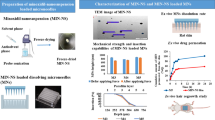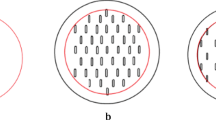ABSTRACT
Purpose
The purpose of this study was to determine if non-specific COX inhibition could extend pore lifetime in hairless guinea pigs following microneedle treatment.
Methods
Hairless guinea pigs were treated with microneedle arrays ± daily application of Solaraze® gel (3% diclofenac sodium (non-specific COX inhibitor) and 2.5% hyaluronic acid); transepidermal water loss was utilized to evaluate pore lifetime. To examine the permeation of naltrexone, additional guinea pigs were treated with microneedles ± daily Solaraze® gel followed by application of a 16% transdermal naltrexone patch; pharmacokinetic analysis of plasma naltrexone levels was performed. Histological analysis was employed to visualize morphological changes following microneedle and Solaraze® treatment.
Results
Animals treated with microneedles + Solaraze® displayed extended pore lifetime (determined by transepidermal water loss measurements) for up to 7 days. Enhanced naltrexone permeation was also observed for an extended amount of time in animals treated with microneedles + Solaraze®. No morphological changes resulting from microneedle treatment or COX inhibition were noted.
Conclusions
Non-specific COX inhibition is an effective means of extending pore lifetime following microneedle treatment in hairless guinea pigs. This may have clinical implications for extending transdermal patch wear time and therefore increasing patient compliance with therapy.





Similar content being viewed by others
REFERENCES
Prausnitz MR, Langer R. Transdermal drug delivery. Nat Biotechnol. 2008;26(11):1261–8.
Prausnitz MR. Microneedles for transdermal drug delivery. Adv Drug Deliv Rev. 2004;56(5):581–7.
Arora A, Prausnitz MR, Mitragotri S. Micro-scale devices for transdermal drug delivery. Int J Pharm. 2008;364(2):227–36.
Wermeling DP, Banks SL, Hudson DA, Gill HS, Gupta J, Prausnitz MR, et al. Microneedles permit transdermal delivery of a skin-impermeant medication to humans. Proc Natl Acad Sci USA. 2008;105(6):2058–63.
Marie L, Foegh PWR. The eicosanoids: prostaglandins, thromboxanes, leukotrienes, & related compounds. In: Katzung BG, editor. Basic & clinical pharmacology. 9th ed. New York: McGraw-Hill; 2004. p. 298–312.
Futagami A, Ishizaki M, Fukuda Y, Kawana S, Yamanaka N. Wound healing involves induction of cyclooxygenase-2 expression in rat skin. Lab Invest. 2002;82(11):1503–13.
Kaushik S, Hord AH, Denson DD, McAllister DV, Smitra S, Allen MG, et al. Lack of pain associated with microfabricated microneedles. Anesth Analg. 2001;92(2):502–4.
Martanto W, Davis SP, Holiday NR, Wang J, Gill HS, Prausnitz MR. Transdermal delivery of insulin using microneedles in vivo. Pharm Res. 2004;21(6):947–52.
Ferguson JC, Martin CJ, Rayner C. Burn wound evaporation—measurement of body fluid loss by probe evaporimeter and weight change. Clin Phys Physiol Meas. 1991;12(2):143–55.
Gao S, Singh J. Effect of oleic acid/ethanol and oleic acid/propylene glycol on the in vitro percutaneous absorption of 5-fluorouracil and tamoxifen and the macroscopic barrier property of porcine epidermis. Int J Pharm. 1998;165(1):45–55.
Verbaan FJ, Bal SM, van den Berg DJ, Groenink WH, Verpoorten H, Luttge R, et al. Assembled microneedle arrays enhance the transport of compounds varying over a large range of molecular weight across human dermatomed skin. J Control Release. 2007;117(2):238–45.
Banks SL, Pinninti RR, Gill HS, Paudel KS, Crooks PA, Brogden NK, Prausnitz MR, Stinchcomb AL. Transdermal delivery of naltrexol and skin permeability lifetime after microneedle treatment in hairless guinea pigs. J Pharm Sci 2010;99(7):3072–80.
Paudel KS, Nalluri BN, Hammell DC, Valiveti S, Kiptoo P, Hamad MO, et al. Transdermal delivery of naltrexone and its active metabolite 6-beta-naltrexol in human skin in vitro and guinea pigs in vivo. J Pharm Sci. 2005;94(9):1965–75.
Iyer SS, Kellogg GE, Karnes HT. A LC-electrospray tandem MS method for the analysis of naltrexone in canine plasma employing a molecular model to demonstrate the absence of internal standard deuterium isotope effects. J Chromatogr Sci. 2007;45(10):694–700.
Banks S, Paudel K, Stinchcomb A, Loftin C. COX enzyme inhibitor enables drug delivery through microneedle treated skin for seven days. AAPS J. 2008;10(S2).
Valiveti S, Hammell DC, Paudel KS, Hamad MO, Crooks PA, Stinchcomb AL. In vivo evaluation of 3-O-alkyl ester transdermal prodrugs of naltrexone in hairless guinea pigs. J Control Release. 2005;102(2):509–20.
Leong J, Hughes-Fulford M, Rakhlin N, Habib A, Maclouf J, Goldyne ME. Cyclooxygenases in human and mouse skin and cultured human keratinocytes: association of COX-2 expression with human keratinocyte differentiation. Exp Cell Res. 1996;224(1):79–87.
Haq MI, Smith E, John DN, Kalavala M, Edwards C, Anstey A, et al. Clinical administration of microneedles: skin puncture, pain and sensation. Biomed Microdevices. 2009;11(1):35–47.
Mikszta JA, Alarcon JB, Brittingham JM, Sutter DE, Pettis RJ, Harvey NG. Improved genetic immunization via micromechanical disruption of skin-barrier function and targeted epidermal delivery. Nat Med. 2002;8(4):415–9.
Hammell DC, Hamad M, Vaddi HK, Crooks PA, Stinchcomb AL. A duplex “Gemini” prodrug of naltrexone for transdermal delivery. J Control Release. 2004;97(2):283–90.
Hammell DC, Stolarczyk EI, Klausner M, Hamad MO, Crooks PA, Stinchcomb AL. Bioconversion of naltrexone and its 3-O-alkyl-ester prodrugs in a human skin equivalent. J Pharm Sci. 2005;94(4):828–36.
Nalluri BN, Milligan C, Chen J, Crooks PA, Stinchcomb AL. In vitro release studies on matrix type transdermal drug delivery systems of naltrexone and its acetyl prodrug. Drug Dev Ind Pharm. 2005;31(9):871–7.
Valiveti S, Nalluri BN, Hammell DC, Paudel KS, Stinchcomb AL. Development and validation of a liquid chromatography-mass spectrometry method for the quantitation of naltrexone and 6beta-naltrexol in guinea pig plasma. J Chromatogr B Analyt Technol Biomed Life Sci. 2004;810(2):259–67.
Scholz K, Furstenberger G, Muller-Decker K, Marks F. Differential expression of prostaglandin-H synthase isoenzymes in normal and activated keratinocytes in vivo and in vitro. Biochem J. 1995;309(Pt 1):263–9.
Buckman SY, Gresham A, Hale P, Hruza G, Anast J, Masferrer J, et al. COX-2 expression is induced by UVB exposure in human skin: implications for the development of skin cancer. Carcinogenesis. 1998;19(5):723–9.
Kampfer H, Brautigam L, Geisslinger G, Pfeilschifter J, Frank S. Cyclooxygenase-1-coupled prostaglandin biosynthesis constitutes an essential prerequisite for skin repair. J Invest Dermatol. 2003;120(5):880–90.
Honma Y, Arai I, Hashimoto Y, Futaki N, Sugimoto M, Tanaka M, et al. Prostaglandin D2 and prostaglandin E2 accelerate the recovery of cutaneous barrier disruption induced by mechanical scratching in mice. Eur J Pharmacol. 2005;518(1):56–62.
ACKNOWLEDGMENTS
We would like to thank Dr. Harvinder Gill and Dr. Mark Prausnitz at the Georgia Institute of Technology for generously providing the MN arrays used for this work. This work was funded by NIH grant R01DA13425 and AllTranz Inc. ALS and SLB are significant shareholders in AllTranz, Inc., a specialty pharmaceutical company developing COX inhibitor technology for use with microneedles. AllTranz, Inc. and the University of Kentucky have pending patents for this technology.
Author information
Authors and Affiliations
Corresponding author
Rights and permissions
About this article
Cite this article
Banks, S.L., Paudel, K.S., Brogden, N.K. et al. Diclofenac Enables Prolonged Delivery of Naltrexone Through Microneedle-Treated Skin. Pharm Res 28, 1211–1219 (2011). https://doi.org/10.1007/s11095-011-0372-2
Received:
Accepted:
Published:
Issue Date:
DOI: https://doi.org/10.1007/s11095-011-0372-2




